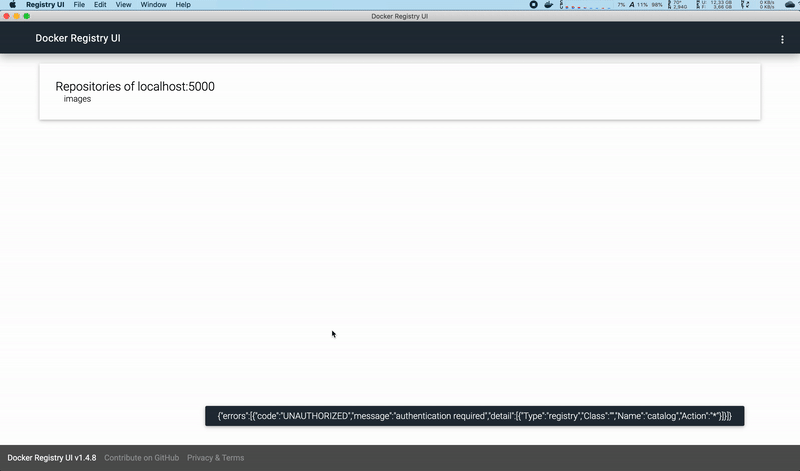Add examples to electron path Add run command |
||
|---|---|---|
| .. | ||
| authentication | ||
| doc/assets | ||
| .gitignore | ||
| README.md | ||
| index.js | ||
| package.json | ||
README.md
Standalone Application
Overview
This standalone application is based on Electron which encapsulates the whole docker-registry-ui in a single executable, that can be run on your local computer.
Building
- Check out or download the repository, open a terminal at the checkout
directory, download the dependencies and build the web app:
npm install npm run build - After building the web application, navigate to the
electrondirectory and execute following commands to build the executable:cd examples/electron npm install npm run dist - Run the application:
npm start
If you encounter any issues, please check the troubleshooting below.
Password Protected Registries
If you want to interact with password protected Docker Registries, this application will use the keystore of your system to gather the credentials for accessing the Registry.
This is accomplished with the keytar package. In concjunction with keytar, the integrated credential helper supports you with managing the credentials to the Registries.
Troubleshooting
-
Problem: The application does not start with
npm startand exits with following message:[7742:0509/001117.199224:FATAL:setuid_sandbox_host.cc(157)] The SUID sandbox helper binary was found, but is not configured correctly. Rather than run without sandboxing I'm aborting now. You need to make sure that ./node_modules/electron dist/chrome-sandbox is owned by root and has mode 4755.Solution: Add proper rights to the chrome-sanbox
sudo chown root ./node_modules/electron/dist/chrome-sandbox sudo chmod 4755 ./node_modules/electron/dist/chrome-sandbox -
Problem: I am on Linux and to not have any password wallet for keytar.
Solution: Install following dependencies according to the official setup instructions for keytar on Linux:
- Debian/Ubuntu:
sudo apt-get install libsecret-1-dev - Red Hat-based:
sudo yum install libsecret-devel - Arch Linux:
sudo pacman -S libsecret
- Debian/Ubuntu:
